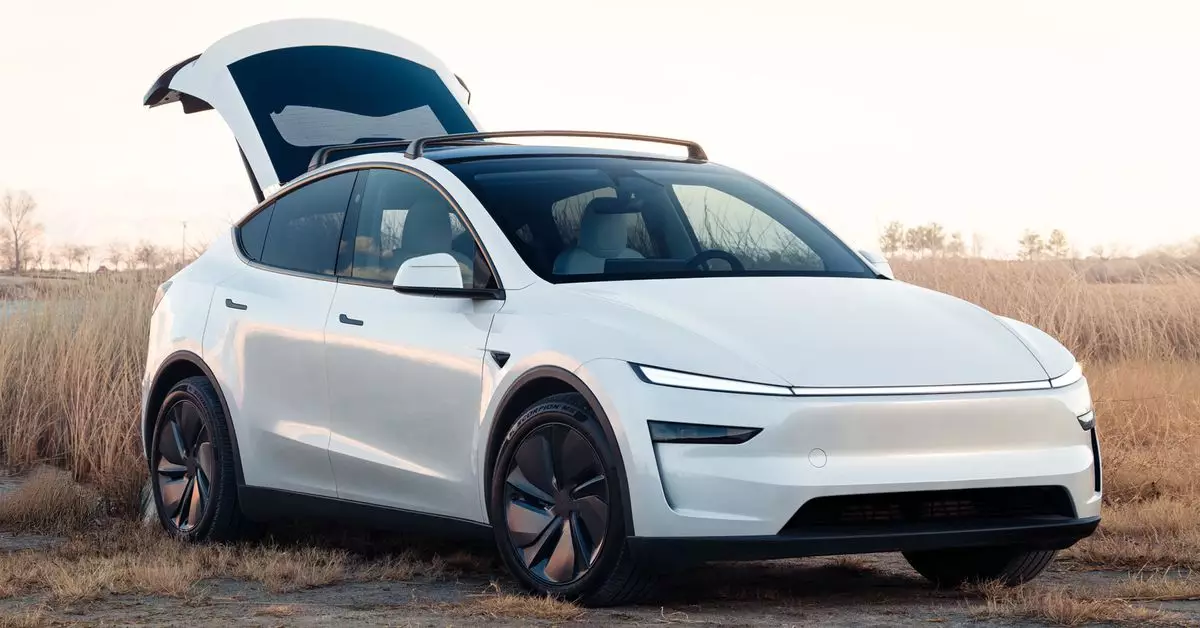Tesla has recently unveiled its updated Model Y, marking a significant move in both the American and European automotive markets. With this new model, the electric vehicle (EV) manufacturer is aiming to recapture buyer interest and address sales challenges while enhancing their flagship offering. This article explores the nuanced changes in the Model Y, the ongoing challenges Tesla faces, and what these shifts mean for consumers and the automotive industry alike.
Tesla has introduced the refreshed Model Y with a slew of upgrades that emphasize not just aesthetics but also functionality and user experience. Among the most visible changes are the redesigned front and rear lights, giving the car a contemporary edge. The interior experience is further enriched with an upgraded 8-inch touchscreen for rear-seat passengers, which signifies Tesla’s commitment to improving passenger comfort and engagement during travel.
Moreover, the new model is equipped with acoustic glass, promising a quieter ride while also enhancing the vehicle’s overall sound system that boasts additional speakers. These adjustments are crucial for driver and passenger safety, especially in urban environments where noise can often become a distraction. Perhaps most notably, the retuned suspension offers improved ride quality, further solidifying Tesla’s focus on producing a family-friendly vehicle.
Another intriguing feature is the apparent reintroduction of a turn signal stalk. Unlike other recent Tesla vehicles that replaced physical controls with touchscreen buttons, this return to a traditional stalk may cater to long-time drivers who prefer tactile feedback over digital interfaces.
Performance remains at the heart of Tesla’s brand identity and the refreshed Model Y does not disappoint. The electric SUV now advertises an impressive 320-mile range—although it’s essential to note that this figure hasn’t undergone EPA certification. This marks an increase from the previous model’s 311-mile estimate. The acceleration capabilities have substantially improved, achieving 0-60 mph in just 4.1 seconds compared to its predecessor’s 4.8 seconds, catering to performance enthusiasts in the family-hauler segment.
However, it’s worth mentioning that the top speed has been reduced from 135 mph to 125 mph. While this might raise eyebrows among speed aficionados, it likely aligns with Tesla’s strategy of emphasizing safety for families over sheer speed.
Currently, Tesla is promoting the “Launch Series” for the Model Y, which is the only trim available for order in the U.S., at a starting price of $59,990. This fully loaded offering includes Tesla’s Full Self-Driving feature, albeit with “Supervised” limitations, along with an Acceleration Boost feature. In a significant move, Tesla maintains that the older Model Y version remains available, enticing customers with reduced pricing—a strategy that may be an attempt to clear out inventory while giving buyers flexibility in their choice.
A notable observation arises when analyzing the pricing; the difference between comparably equipped new and old Model Y variants is a mere $4,000. This distinct pricing approach highlights Tesla’s adaptability in a competitive landscape, where consumers are increasingly tech-savvy and value-conscious.
Despite these attractive new offerings, Tesla faces hurdles that cannot be overlooked. Recently, the company reported its first year-over-year sales decline, raising concerns over its brand loyalty and market perception. While aesthetic and functional improvements in the Model Y may enhance its appeal, the external competition in the EV market is fierce, with various automakers launching their own electric SUVs that offer compelling features.
Moreover, the ever-evolving regulatory landscape surrounding autonomous driving capability could pose challenges for Tesla’s Full Self-Driving system, particularly as safety concerns mount among consumers and regulators alike.
While the refreshed Model Y offers several attractive features and improvements aiming to reinvigorate Tesla’s presence in the EV market, the company must navigate a complex landscape filled with market competition and consumer expectations. How well it can adapt to these changes will determine whether it can sustain its position as a leader in the electric vehicle revolution. As Tesla continues to innovate, it remains to be seen whether these modifications will be sufficient to not only maintain but also expand its customer base.

